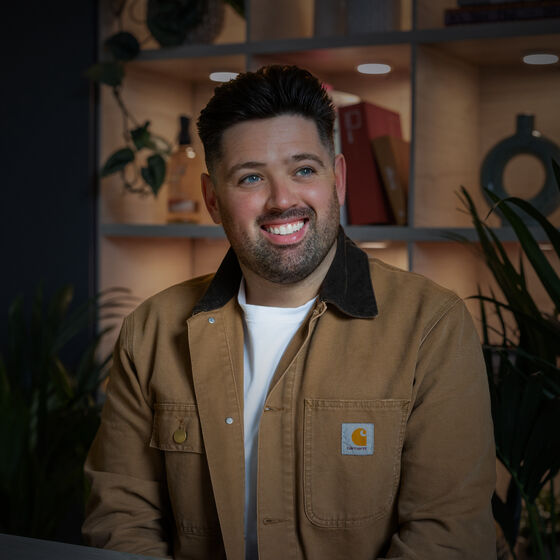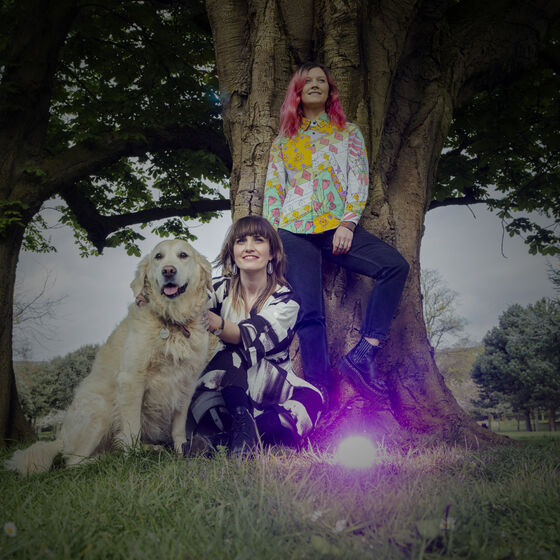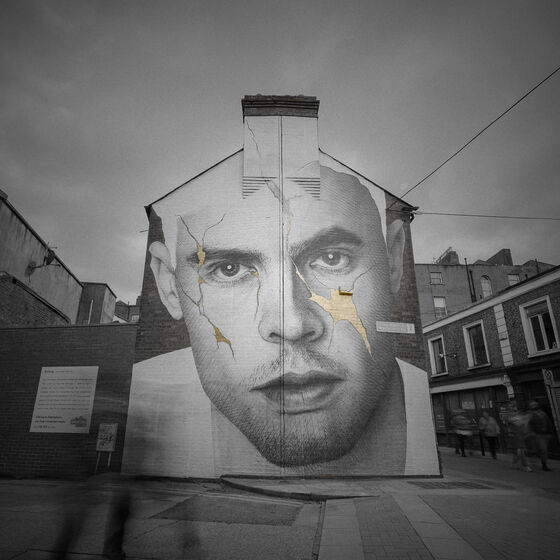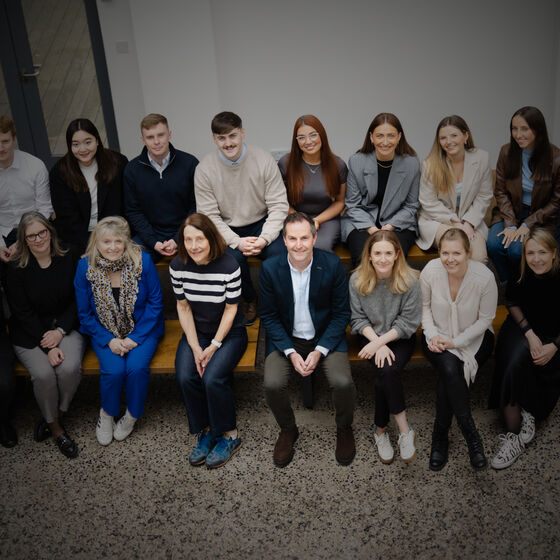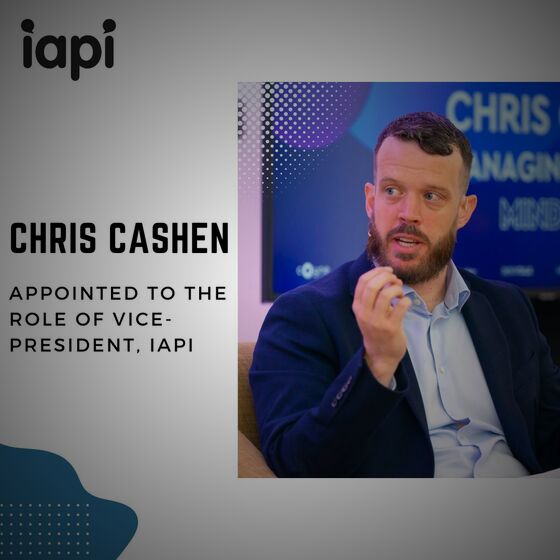This April, IAPI sent me on a journey to the hipster capital of the world, Shoreditch, to check out the D&AD Festival and soak up some inspiration from some industry greats and get in the zone for the upcoming Cannes Young Lions competition in June. The festival, in its second year, boasts some of the design and advertising industry’s most well regarded thinkers and doers, discussing world issues, challenges facing the design community, advances in technology and what that means for the industry, and many other themes centred around how design and creative thinking can be used to enrich the world and make it a greater place to live.
This year, each day of the festival was themed. Day one’s theme was ‘The Earth Will Shake’, which asked how design can help to create positive social change in a world constantly in flux, and create more sustainable futures for us all. Day two’s theme was ‘Staring at The Sun’, looking at advancements in technology, new trends in working styles and how we can predict future trends and innovate in a transforming sector. And finally, day three, ‘Outrageous Magic’, which saw the industry’s superstars showcase and discuss their work and processes, explaining their craft and discussing how ‘big ideas’ are developed.
After an ungodly early flight from Dublin Airport and a few trains, I finally made it to the festival in The Old Truman Brewery on Brick Lane, just in time to join the world’s longest line for coffee (at least 35 people!), and get stuck in to what was to be my favourite day of the festival, Tuesday’s ‘The Earth Will Shake’.
For me personally, this day was awe inspiring. Centred around themes of designing for good and how we can use our skills to create real social change in a world filled with adversity and strife, I saw how design and creative thinking can be at the core of social movements, and can be a facilitator for true activism, disruption and agitation. Here I will discuss some of the highlights from Tuesday’s delights.
The first talk I made it to was Steve Vranakis of Google Creative Lab discussing the subject of ‘Creative Activism’ (How lucky was I!). Steve spoke passionately about the value of technology as a democratising force, and as one that allows people to channel their creativity and apply themselves. In essence, that tech empowers people. Steve asked the question, how can we use technology to empower people who have less than we do? He explained that creatives have the perfect skill set for this as storytellers and problem solvers, that we are capable of more than just selling, and that we can be creative activists and practice altruism, everyday.
He outlined some projects he developed at Google in which he utilised creative thinking to tackle some real societal problems, such as; creating adaptable apps to help refugees when they land on shore; giving a voice to youth in the highest ranks of government by creating a ‘youth assembly’ installation of children’s comments in the chambers of the UN; and enabling women in rural India to empower themselves and share skills with each other by creating a system whereby internet access can be brought to friends on bicycles. An incredible spread of work that showcases the power of creativity as a tool for good in the face of adversity.
Another highlight of Tuesday was Designer and Creative Director, Craig Oldham, of The Office of Craig Oldham’s ‘Tools for Protest’ talk in which he outlined the ways in which people can react and have reacted creatively to times of hardship. In his talk Craig used local and international examples to illustrate the key tools of: Repurposing, Reclamation, Distillation, Empathy and Building. These ranged from everyday people’s creative reactions to the UK Miner’s Strikes of the the 1980s, powerful campaigns created in the midst of the AIDS crisis in 1980s America, the Czech Republic’s Velvet Revolution, and emphasising the importance of women in building activist movements, such as anti-nuclear war groups and against such things as austerity cuts and Donald Trump.
Craig’s talk showcased the idea that people in hardship turn to creativity as a problem solving tool, and good creative ideas are powerful tools for sparking discussion, empowering people, and creating real change. He suggested that at the core of all successful social movements is a simple creative idea that can be co-opted, universally understood and used by many people in an open way to send a strong message.
While Oldham and Vranakis were the personal highlights of Tuesday, fantastic and challenging work was shown by Mike Rigby of R/GA NY. Big thumbs up for the AskForARaise Cindy Gallop chat bot that encourages women to ask for a raise at work, and their John Cena #LoveHasNoLabels advert that challenged traditional ideas of American patriotism.
One of the most interesting points that arose from Tuesday’s sessions was the fact that sustainable brands turn over twice as much revenue as their unsustainable counterparts. This statistic shows that brands must make the switch to sustainability or face being left behind in a changing marketplace. This fact was echoed in multiple talks over the course of the festival. And so…off I went home on the tube to catch some z’s and ready myself for another intense day of inspiration. Day two’s ‘Staring at the Sun’ theme focused on a changing sector as regards trends and technology and how we can keep up in an industry in flux.
A highlight of day two for me was Lucie Greene of The Innovation Group discussing ‘The Future of Women’s Interest’. In her talk, Greene outlined trend research pieces that she had worked on that show a bleak future for ‘Women’s Interest’ publications and brands that refuse to acknowledge that the sector is changing, that women are changing, and that they won’t continue to accept content that’s not tailored to suit their own authentic viewpoints.
Greene delved deep into the habits and attitudes of this new generation of women, the products, brands, and advertising they engage and align with, the channels they use, their interests, and their political leanings. Rather than view the world of the ‘average woman’ through the lens of what women’s interest publications (and advertisers) would lead us to believe, Greene’s research showed us what women today really value. Her findings showed that they are consuming media in a more gender-neutral way, with more of a focus on diversity in ages, race and body types featured, focusing on such topics as; intrepid solo travel excursions, opting out of heteronormativity; nutrition over traditional standards of beauty; female-centric pornography; and politics, to name but a few.
Greene showed us what the women’s interest publication of the future might look like, with her publication that she developed with The Innovation Group, ‘Glass’, which incorporated all of her findings. All in all, her talk was inspiring, presenting a generation of women taking the reigns on the content they consume, and forcing brands and advertisers to align to their new ways of thinking, lest they be left behind.
Other points of interest from day two was the fascinating and forensic Dick Powell (of Seymour Powell’s presentation) on designing innovation, and the incredible Anna Higgs of Nowness discussing the value of creative integrity at all costs in the creation of video content to drive true engagement.
On we go to day three! Day three started with a bang, with Pentagram’s Marina Willer discussing ‘Design for Change’, and posing the question “how do you design for a world that’s always in flux?” She outlined ways in which we can design systems that can grow organically in a world that’s chaotic and out of control, how designers are now collaborators co-creating frameworks for things to happen within, and how design agencies now need to change structure to be more agile and flexible in this new chaotic world. She noted that all traditional parameters we’re used to are now disappearing, and we can make personal work as a reaction to this.
Willer then presented her powerful personal film project that she has been developing that centres around the history of her family’s origins through the lens of her father and his experiences as a Jewish WW2 survivor. This, in the midst of all her fantastic and celebrated design work, shows the importance of stopping to develop works that have significance to us, from a wider human, historical and cultural standpoint.
I skipped the Stefan Sagmeister love-in this time around, as I’ve witnessed him present at other conferences a few times in recent years, so shockingly, one of my next highlight’s of day three is not him! It’s Colleen DeCourcy, CCO of advertising agency Wieden + Kennedy. Her presentation, titled ‘How to Catch Lightning in a Bottle’ was just that, pure magic. While outlining the ways in which the creative role is changing in a world where technology is democratising traditional infrastructures and giving the lay person access to tools that historically only the rich/affluent had access to, DeCourcy discussed how people who used to have the monopoly on creative ideas and industries (for example, the film industry, the music industry) are now disappearing, and this has lead to a creative renaissance. She proposes that this is the golden age of auteurism, but that people have to take responsibility for what they put out into the world.
This lead to her next point, (which rang very true in light of recent examples, i.e. Kendall Jenner’s Pepsi advert), that was that in advertising and design you must tackle cultural issues head-on, and that you cannot co-opt culture or cultural movements. People are more aware than this, and are ready, willing, and able to call out your bullshit. You can’t tidy up dissent and present it back to people in a neat package, but you can deal with issues and address them in a smarter way that gets to the core of its human meaning. That is where the lightning is. DeCourcy described it as disruptive thinking, scaled. Using examples from her extensive catalogue of unbelievably powerful work, she highlighted these issues by showing how Pepsi could have done it, with integrity, intelligence and raw emotion. Fantastic!
Day three ended the way all good days should, with 8,500 dick pics, courtesy of Erik Kessels of KesselsKramer, always insightful, always hilarious, and with a healthy dash of bizarre genius. To finish, what a fantastic few days! Thanks to IAPI and D&AD for the opportunity to attend, my brain is positively bursting with inspiration, that is no doubt going to fuel me, at least until this time next year. In comparison to other design festivals, D&AD brings the concept to a whole other level, sidestepping the trend of simply showing pretty portfolios, and getting to the core of what lies ahead for the industry and what we as creatives can be doing to make a positive impact in the world, through ideas, collaboration, and graft.
Emma Wilson is one half of the Young Lions Design Team who will represent Ireland in Cannes in June. She is a Senior Designer for RichardsDee.
